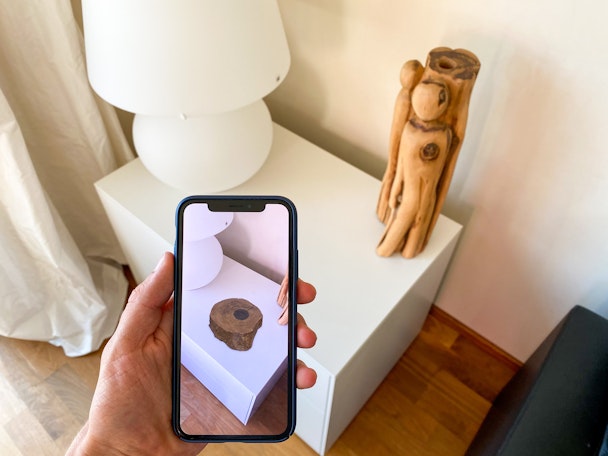Embracing the unknown in luxury business
The luxury business model, like many others, has been changed forever. While digital-first consumer interactions have become the new normal, the need to embrace platforms and technology that create a real-world feel has never been more acute.

Cult suggest ways luxury brands can connect more meaningfully with customers through technology, data and AI.
The Creatology Report, a white paper commissioned by Cult, revealed how luxury brands must embrace creativity and technology to recover from COVID. Creativity and technology can facilitate brand engagement with consumers whose mindset and retail patterns of behaviour have fundamentally changed under lockdown.
Obviously, the need for tactility and the ability to interact are crucial elements of the brand discovery and purchase process, but consumers are now living isolated digital-first lives. Marketing strategies must change accordingly.
The new establishment luxury brands will be those that embrace the unknown. Luxury brands, be they icons or start-ups, will thrive if they proactively innovate using creativity and technology in the face of a new and remote consumer whose patterns of behaviour have changed forever. Many business leaders may find this new world daunting, but it represents great possibility. There are five key tactics these businesses should adopt to future proof their sales, but more crucially, their relevance.
Augmented reality sampling: Gucci, Chanel and YSL have been experimenting with digital experiences that use AR and sensory cues to create individual consumer interactions. Augmented Reality Lenses are the perfect way to immerse an audience in a brand, Chanel partnered Snapchat to allow consumers to view the world through their eyes, YSL Beauty used Virtual Try On for their makeup and Gucci applied it for their trainers. Last year YouTube debuted its AR virtual try-on sessions which enables consumers to instantaneously experiment with products that their favourite luxury bloggers are promoting. This creates a more seamless interaction with brands and products and allows sampling without the obstacle of consumers having to download dedicated apps.
Instagram Live: the guest function has transformed the platform from a static digital gallery into the television talk show of the pandemic era, Instagram influencers like Vanessa Hong are hosting chats with global fashion designers with newfound time on their hands, such as Phillip Lim. Marc Jacobs has become a beauty influencer during his lockdown, filling his IGTV feed with creative make-up tutorials. Loewe en Casa has been doing an ongoing series of online events and workshops taking place via Instagram Live. The project focuses on arts and crafts, features past artistic collaborators giving the consumers a rare look into the artists’ studios and skills. Prada has also initiated a series of digital talks on Instagram Live connecting great minds in fashion, art, architecture, cinema, and thought to converse with each other, creating an intimate user-experience much like a Zoom call.
The sensory internet: create content that leverages visual, aural and verbal stimulation to engage and inspire, sound is becoming more integral as brands embrace and experiment with ‘brain tingles’ aka ASMR (autonomous sensory meridian response) identities and sonic logos. In 2019 Givenchy created a campaign called I am Your Mirror in which the models slowly ate juicy apples and crushed grapes under their stiletto heels. Coach created a series of multi-sensory Instagram shorts showing leather being cut by hand, hands stroking a Coach bag, a bag being immersed in suds and a bag clicking shut, all with the tagline: ‘See it, feel it, hear it: authentic American leather craftsmanship’.
Social media and brand communities: integrate your brand into popular online media that already nurtures communities and human connection, embrace everything from TikTok, esports, micro and macro Influencers to live-streaming. Now more than ever consumers are looking for luxury brands with authentic purpose and a social conscience, your brand has power – use it. Louis Vuitton was the first global luxury brand to partner with an esport, collaborating with Riot Games’ League of Legends for a collection of virtual clothing which sold both within the game as well as in real-world stores.
Mixed reality marketing: invest in your virtual signature store, strive to create a similar wow-factor experience as your real-world store. The age of the monotonous grid ecommerce interface that Amazon created 25 years ago to sell books is over. Burberry launched an AR shopping tool through Google Search allowing consumers to experience Burberry products embedded in the environment around them, enhancing their online research and shopping experience. Similarly, the luxury skincare brand SK-II’s Future X launched a Smart Store that utilises state-of-the-art facial recognition, computer vision and AI to provide customers with bespoke skincare recommendations.
As marketers we shall have to learn a whole new language if we wish to connect meaningfully and communicate effectively with customers. The creative application of technology, data and AI is what will define the new order of luxury brands
Bridey Lipscombe, co-founder & global MD at Cult.
Content by The Drum Network member:

CULT
Cult's ideas and insight take some of the world’s biggest beauty, fashion, luxury and wellness brands beyond their comfort zone to drive tangible business value....
Find out more
